Infectious Disease Lab – Dr. Pazgier
OVERALL RESEARCH GOALS
A precise three-dimensional representation of molecules and their functional interactions is crucial for the complete understanding of disease processes and the design of effective therapy and cure alternatives. Dr. Pazgier's group uses structural biology including x-ray crystallography, negative stain and single particle cryo-electron microscopy (cryo-EM) in combination with structure-function analysis and biomedical engineering to elucidate the mechanisms underlying host innate and adaptive responses to infectious disease with the transitional research goal of developing new vaccines or treatment options. In particular, this entails managing a significant, externally supported research program that is currently focused on three key areas: HIV-1, the antimicrobial activity of defensins, and SARS-CoV-2.
PROJECTS
Our research in HIV-1 and more recently SARS-CoV-2 is centered around describing the molecular details of mechanisms involved in the Fc- effector functions of antibodies with the goal of effective utilization of these mechanism in vaccine strategies and antibody based therapeutic approaches. Fc-effector functions, including antibody-dependent cell-mediated cytotoxicity (ADCC), constitute an important bridge between innate and adaptive responses to viral infections. Through mechanisms involving interactions between the antibody’s constant crystallizable fragment (Fc) region and Fc receptors (FcRs) on the surface of effector cells (natural killer cells (NKs), monocytes, macrophages, dendritic cells, and neutrophils) (Figure 1), they result in the clearing of virus particles or virus-infected cells. Although Fc-effector functions are a major mechanism of antibody-mediated protection against HIV-1 and SARS-CoV2, little is known about the optimal configuration of antigen-antibody-FcR complexes that elicit potent cell lysis. Our lab is attacking this problem by defining structures of antigen-antibody and antibody Fc-FcR complex of potent and less potent antibodies at the atomic level to define the common structural features that lead to most effective Fc-effector activities. We use the information gained to engineer new vaccines or antibody-based therapeutics. Specific projects in this team are:
New HIV-1 vaccine concepts. Our structural understanding of ADCC to the Cluster A Env region on HIV-1 Env allowed us to develop new HIV-1 vaccine candidates. Our lead immunogen, referred to as ID2 (Figure 2), specifically induces anti-HIV-1 ADCC Ab responses in mice and is a candidate for future challenge studies.
New strategies for a HIV-1 functional cure through ADCC. In HIV-1 infection, many antibodies are elicited to Envelope (Env) epitopes that are conformationally masked in the native trimer and are only available for antibody recognition after the trimer binds host cell CD4. Through structure-based design we developed a novel Ab-based therapeutic (Figure 3) capable of sensitizing HIV-1 virions and HIV-1-infected cells to ADCC in ART-treated individuals by mechanisms that involve both direct virus neutralization and ADCC.
Molecular basis for effector function in Non-human Primates (NHPs). Despite evolutionary proximity, there are significant immunological differences between humans and the Old-World monkeys, Rhesus macaque (RM), the most frequently used primate model organism to study human disease. Our program aims to fill an existing gap in the understanding of the molecular basis of antibody-mediated humoral responses in RM to define differences and to map Ab Fc biology across the species barrier. This takes the form of characterizing humoral response components and their interplay at the molecular level, e.g. IgG (Figure 4) and IgA antibodies, Fc receptors, C1q complement, etc. in human and RM to define similarities and differences.
HIV-1 entry inhibition by broadly neutralizing Abs (bnAbs) and small molecule inhibitors. The first step in the HIV-1 entry process is the attachment of the Env trimer to target cell CD4. As such, the CD4 binding site (CD4bs) remains one of the few universally accessible sites on the Env trimer. We aim to understand the neutralization mechanism of Abs targeting the CD4bs as well as to develop new small compound agents that mimic CD4 within the Env CD4 binding cavity, specifically to inhibit viral entry and help inactivate HIV-1 infected cells through ADCC.
Molecular determinants of HIV-1 resistance to small molecule inhibitors. Temsavir (BMS-626529) is the active metabolite of fostemsavir, a first-in-class attachment inhibitor of HIV-1 for treatment in adults with multidrug-resistant HIV-1 infection. Our lab investigates mechanisms of temsvir action on various HIV-1 strains to describe to the molecular basis clade resistance to this drug (Figure 5).
SARS-Cov-2 Therapeutic interventions. Dr. Pazgier’s group uses structural biology to understand the molecular basis of anti-SARS-CoV-2 antibody interactions with their primarily viral targets that lead to broad and potent neutralization and ADCC. Recent results from this team includes characterization at a molecular level of a series of broad and potent neutralizing and ADCC potent antibodies isolated from infected individuals and the development of angiotensin-converting enzyme 2 (ACE2) into an immunoglobulin with broad antiviral activity against SARS-CoV-2, Variants of Concern (VOCs) and other emerging ACE2-dependent beta-coronaviruses (Figure 6).
Human defensins. Defensins are small cationic and cysteine-rich peptides that belong to the group of antimicrobial peptides. In vivo, defensins kill bacteria, fungi, and viruses through mechanisms involving mainly electrostatic interactions. Dr Pazgier’s studies provided the first evidence of a role of hydrophobic residues and oligomerization in the action of defensins on bacterial/viral membranes. These studies also revealed that defensins also target microbe-specific lipid receptors and thus can be used as novel antibiotics targeting opportunistic bacteria or bacterial biofilms.
People
Teamwork and people are what enable achievement, regardless of where it occurs. We are lucky to have a lab full of enthusiastic, intelligent, and outgoing individuals from various walks of life. If you want to learn more about them, go below:
Marzena Pazgier, PhD
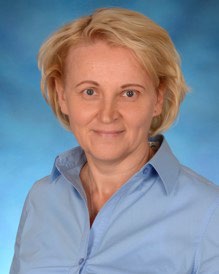
Marzena Pazgier, PhD
Professor, Department of Medicine, Infectious Disease Division
Professor, Emerging Infectious Diseases (secondary)
Professor, Department of Biochemistry (tertiary)
Professor, Molecular and Cell Biology (quaternary)
Contact Dr. Pazgier at: marzena.pazgier@usuhs.edu
Dr. Pazgier is a graduate of Lodz University of Technology, Poland in technical sciences and did her postdoctoral training in the structural biology of infectious disease at the Molecular Crystallography Laboratory in the National Cancer Institute, NIH at Frederick, MD. Before joining USU in 2018, Dr. Pazgier was a faculty in the Institute of Human Virology and Department of Biochemistry and Molecular Biology at the University of Maryland, Baltimore, MD. Her expertise is structural biology of macromolecules involved in innate and adaptive responses, immunology and contemporary biophysical and protein engineering techniques.
William D. Tolbert, PhD
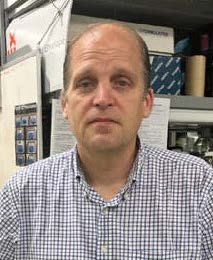
William D. Tolbert, PhD
Scientist II
Contractor Henry M. Jackson Foundation
Contact Dr. Tolbert at: william.tolbert.ctr@usuhs.edu
Dr. Tolbert received his A.B. in chemistry from Cornell University, Ithaca, NY and his M.S. and Ph.D. degrees in biology from the University of Virginia, Charlottesville, VA. He completed postdoctoral training in the Department of Biochemistry at the University of Kentucky, Lexington, KY, the Department of Chemistry and Chemical Biology at Cornell University, Ithaca, NY, and the Institute of Human Virology and Department of Biochemistry and Molecular Biology at the University of Maryland, Baltimore, MD and also worked as a Research Scientist at the Van Andel Research Institute in Grand Rapids, MI. His expertise is in the structural biology of macromolecules and molecular biology.
Marek K Korzeniowski, Ph.D.
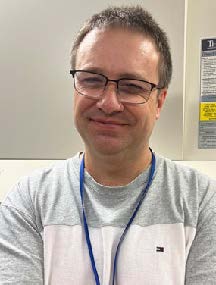
Marek K Korzeniowski, Ph.D.
Scientist I
Contractor Henry M. Jackson Foundation
Contact Dr. Korzeniowski at: marek.korzeniowski.ctr@usuhs.edu
Dr. Korzeniowski is a graduate of the Polish Academy of Science, Nencki Institute of Experimental Biology, Warsaw, Poland in cell biology where he was studying the immunoreceptor gamma signaling cascade. His postdoctoral training was done in the Tamas Balla lab at NICHD, NIH at Bethesda MD studying the molecular mechanism of Store Operated Calcium Entry. He also worked in the Baird-Holowka lab at Cornell University, Ithaca NY to continue studies on SOCE in immune cells. Following that he joined the Burnett lab at USUHS to do research on protein degradation in SMA. He has expertise in molecular cell biology, protein biochemistry, electron and confocal microscopy and protein engineering techniques.
Ling Niu, PhD
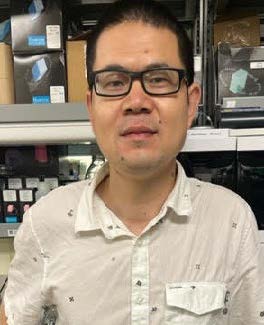
Ling Niu, PhD
Postdoctoral fellow
Contractor Henry M. Jackson Foundation
Contact Dr. Niu at: ling.niu.ctr@usuhs.edu
Dr. Niu got his MD from Wuhan University, China and PhD from Chinese Academy of Science majored in biochemistry and molecular biology. He has worked for approximately four years in Nanyang Technological University, Singapore to develop peptide and protein conjugation techniques. He also spent four years in Iowa State University working on HIV and SARS-CoV-2 vaccine development. His research interest is structure-based drug and vaccine design.
Suneetha Gottumukkala, MS
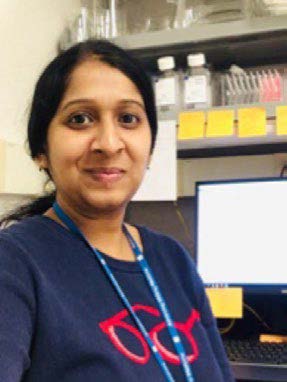
Suneetha Gottumukkala, MS
Research Assistant I
Contractor Henry M. Jackson Foundation
Contact Mrs. Gottumukkala at: suneetha.gottumukkala.ctr@usuhs.edu
Mrs. Gottumukkala is a graduate of Microbiology, Biochemistry, and Chemistry from CH. S. D. St. Theresa's college, Andhra Pradesh and Dr. Reddy’s Laboratories Ltd, Hyderabad, India; with MS in Microbiology from Andhra Pradesh. She worked as a Research Trainee at Government Hospital, India and as a Special Research Volunteer as at the National Institutes of Health (NIH), NIDCR, Bethesda, MD. Her expertise is in bacterial and mammalian cell cultures, molecular biology and protein purifications.
Former Lab members
Postdoctoral fellows and Scientists
Yaozong Chen, PhD, postdoctoral fellow, 2020-2023, currently Senior Scientist I at Novo Nordisk, NNRCC
Dung Nguyen, PhD, postdoctoral fellow, 2019-2022, currently Scientist at Tekeda, INC, Boston
Rebekah Sherburn, PhD, postdoctoral fellow and Scientist, 2018-2022; currently Senior immunologist at Vaccitech
Neelakshi Gohain, PhD, postdoctoral fellow, 2017-2017, currently Scientist at The Henry M. Jackson Foundation for the Advancement of Military Medicine, Silver Spring
Xueji Wu, PhD, postdoctoral fellow, 2010-2012, currently Associate Professor, Department of Chemical Biology, University of Xiamen
PhD Students
Ruchinskas, Allison, MCB Graduate Program Rotation Student, USU, Winter-Spring 2022
Gurung, Pratibha, EID Graduate Program Rotation Student, USU, Fall-Winter 2021-2022
Rohini Manickam, MCB Graduate Program Rotation Student, USU; Summer-Fall 2020
Amanda Green, EID Graduate Program Rotation Student, USU, Winter-Spring 2020
Eric Russ, MCB Graduate Program Rotation Student, USU, Fall 2019
Brianna Young, GPILS Biochemistry and Molecular Biology Rotation Student, UMB, Baltimore, 2018
Andrew Butler, GPILS Biochemistry and Molecular Biology Rotation Student, UMB, Baltimore 2017
Canessa Swanson, GPILS Biochemistry and Molecular Biology Rotation Student, UMB, Baltimore, 2016
Verna Van, GPILS Biochemistry and Molecular Biology Rotation Student, UMB, Baltimore, 2016 and PhD student 2017-2018 (dropped after lab moved to USU)
Devin Sharp, GPILS Biochemistry and Molecular Biology Rotation Student, UMB, Baltimore, 2016
Postgraduate & Undergraduate Students
Zofia Dyba, University of Maryland College Park; USU Summer internship, Summer 2023
George Sellers; University of Maryland College Park; USU Summer internship, Summer 2022
Andrew C. Kadish; University of Maryland College Park, Bioengineering; Summer internship, Summer 2017
Wei Guo, Suzhou University, Summer 2012
Gregory Ginsberg, College of William and Mary, Summer 2010
High School Students
Emily Pangaro, Fall-Winter 2021-2022